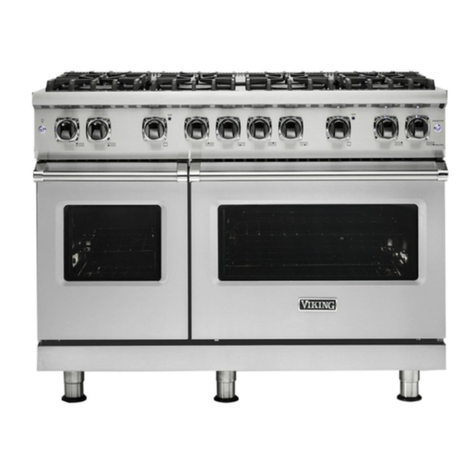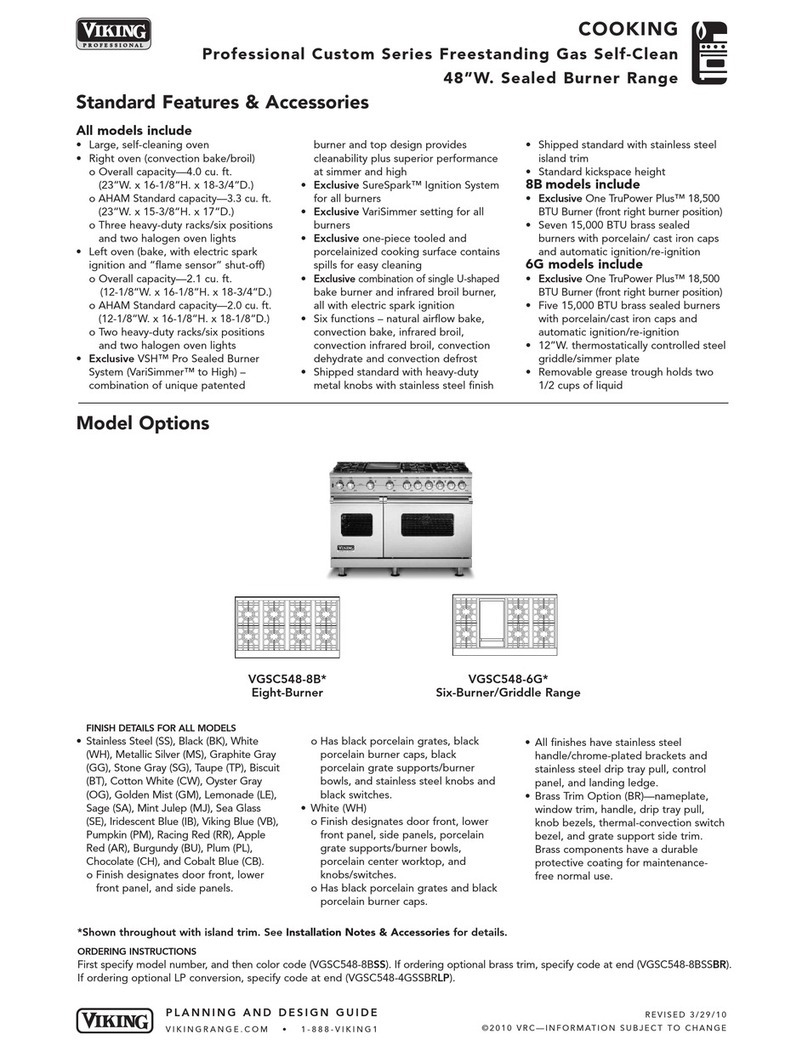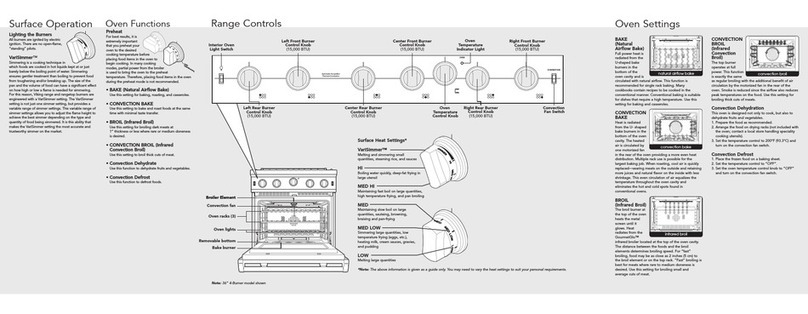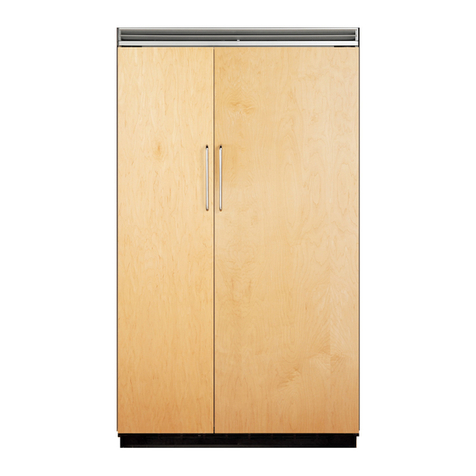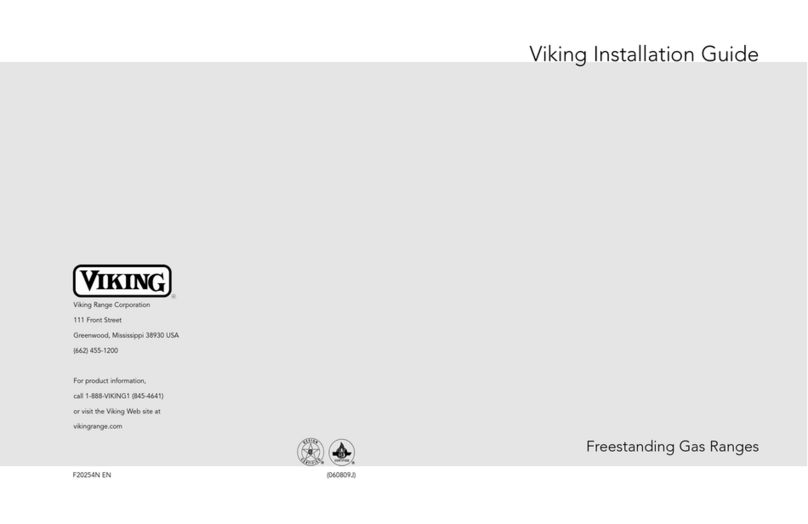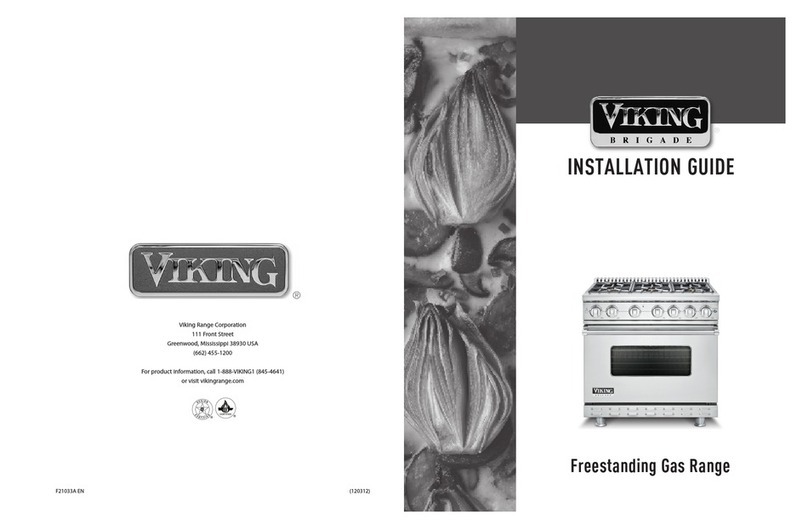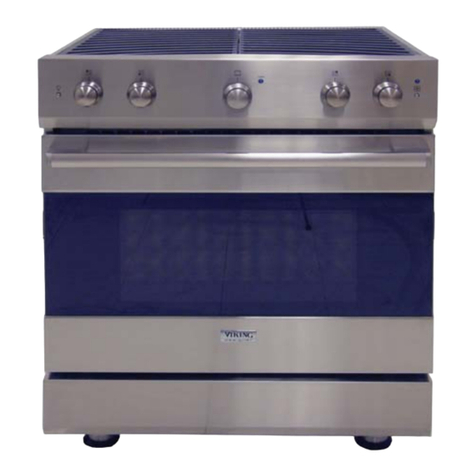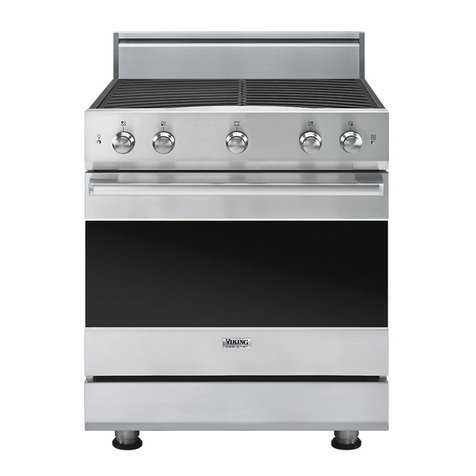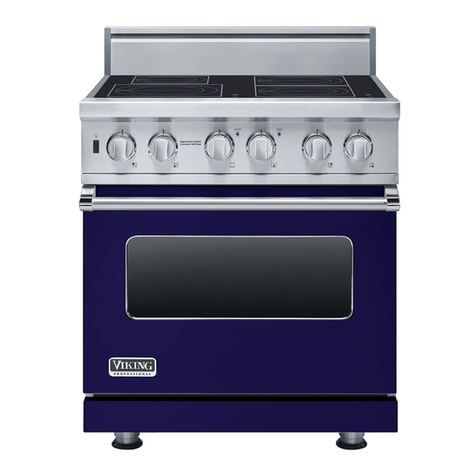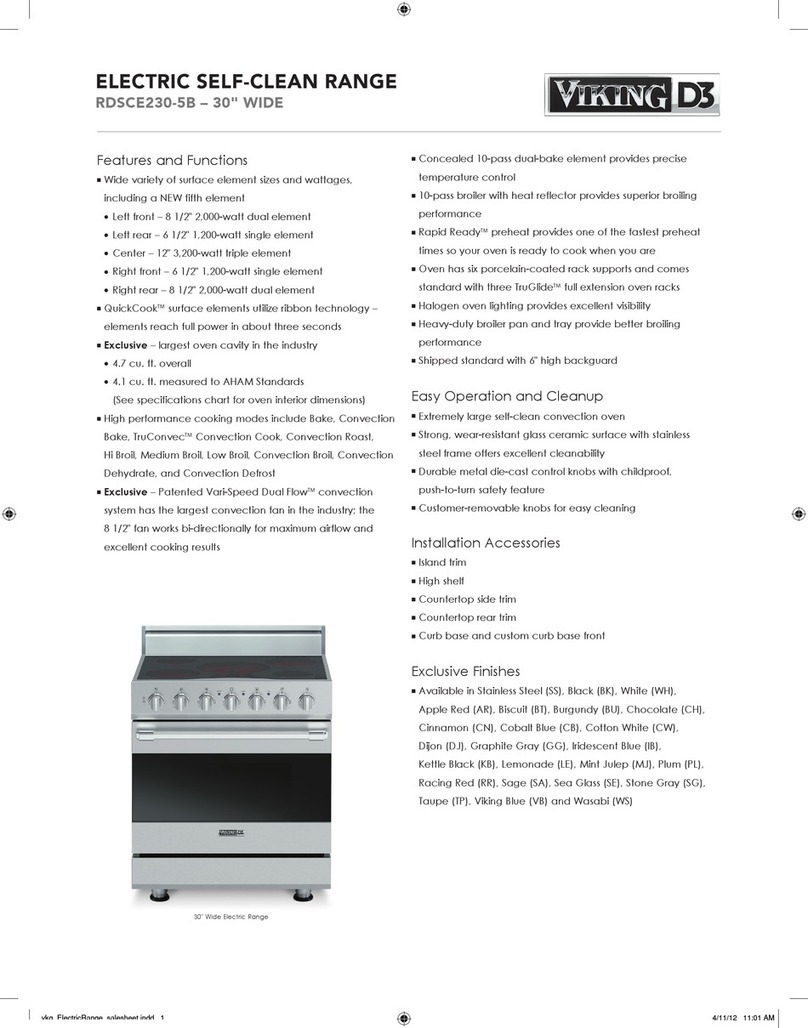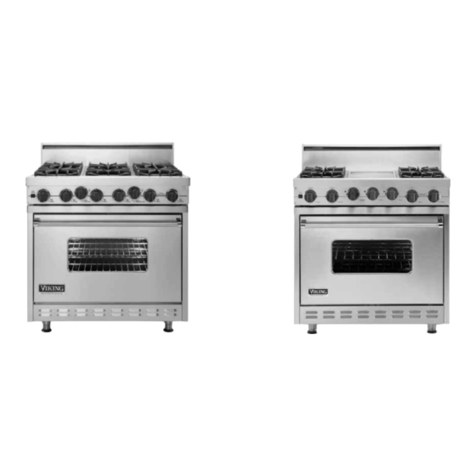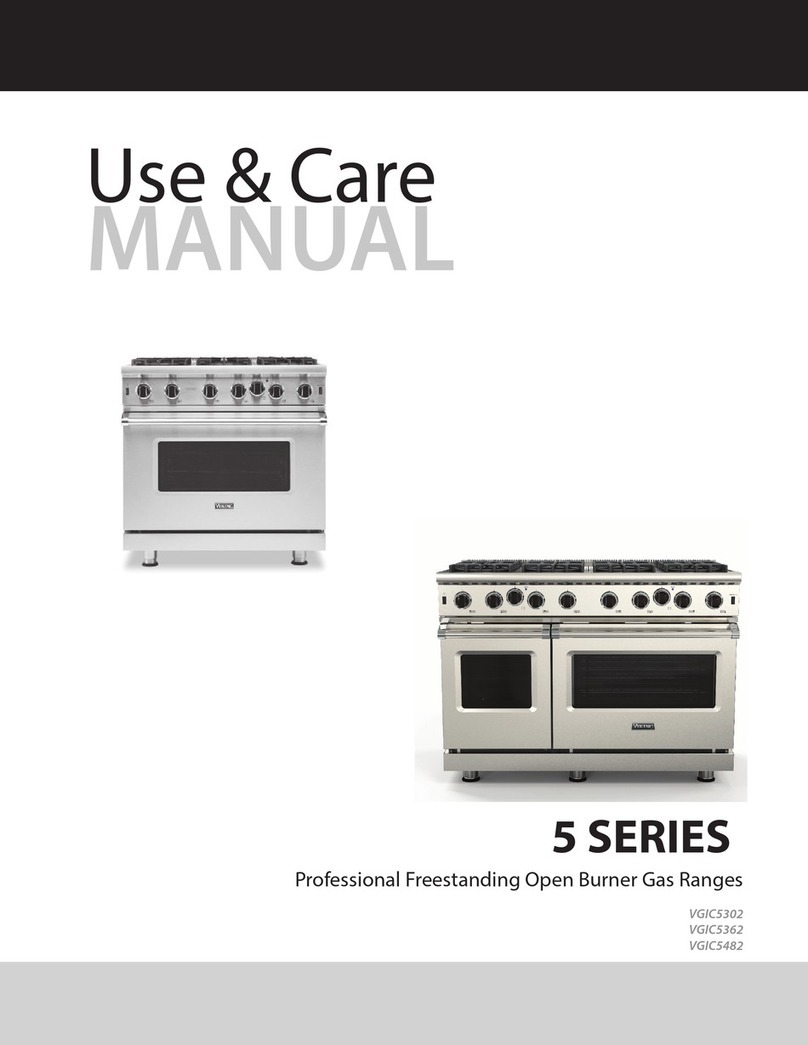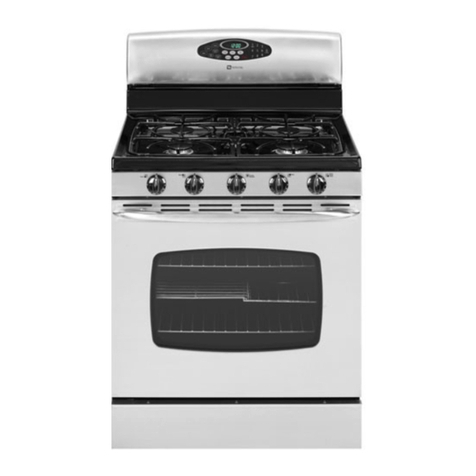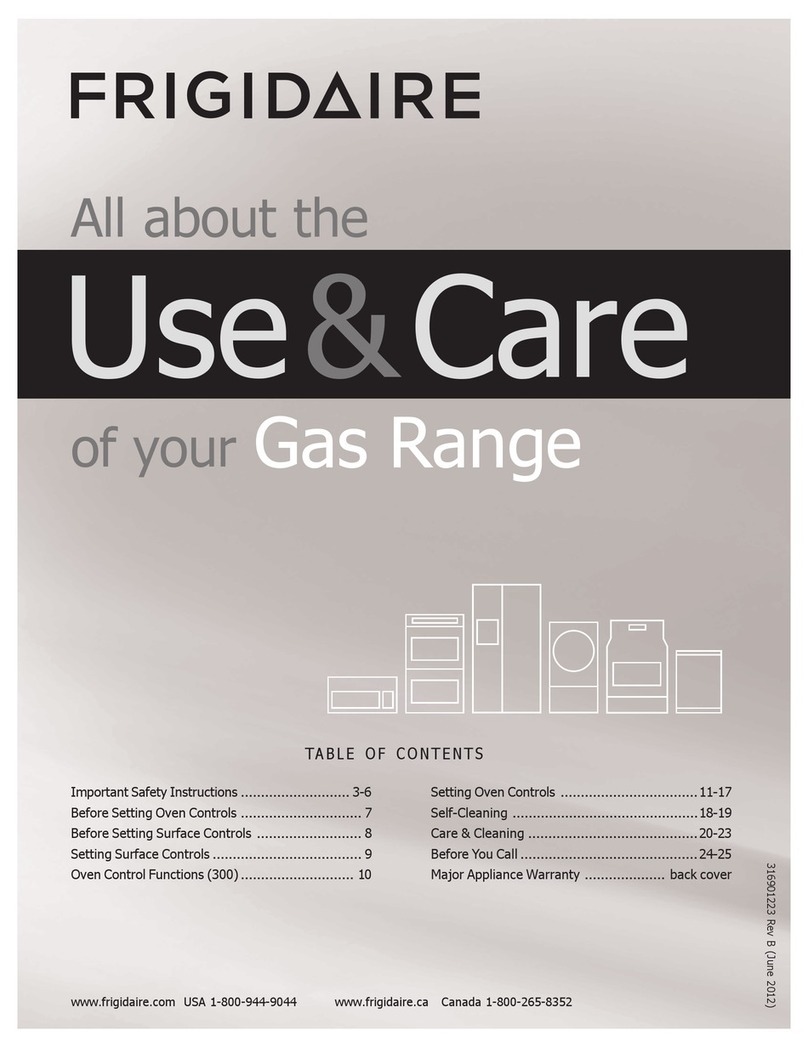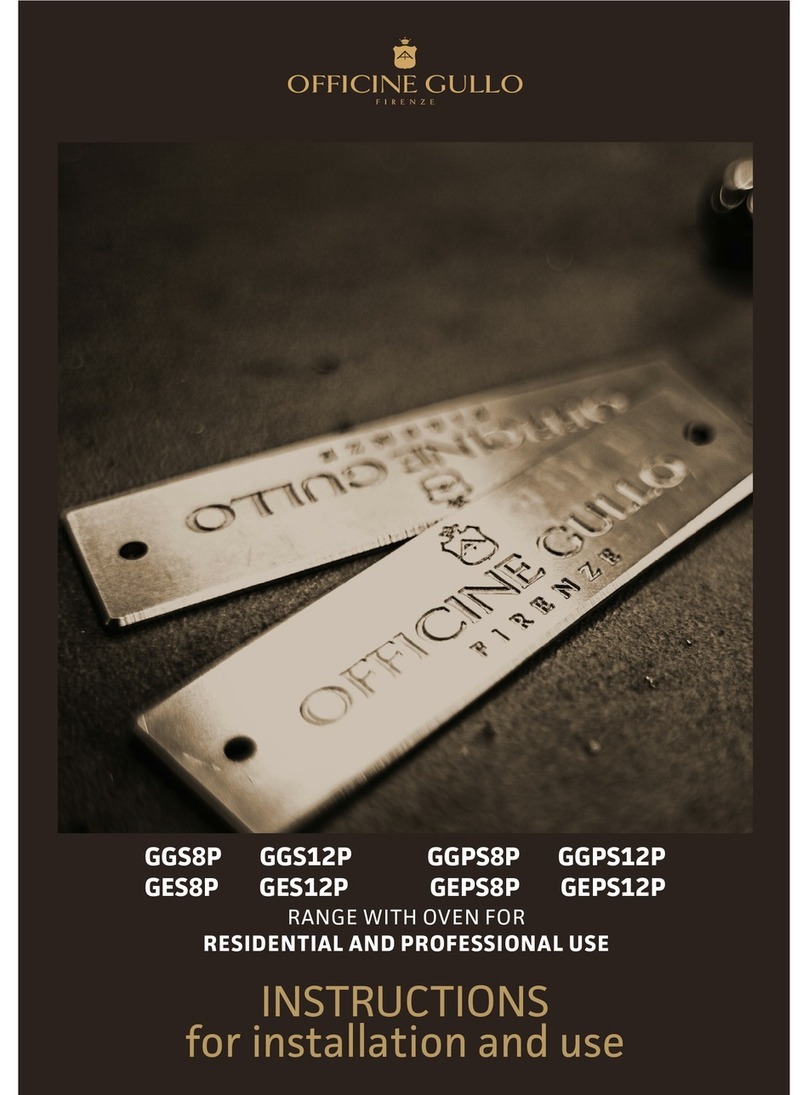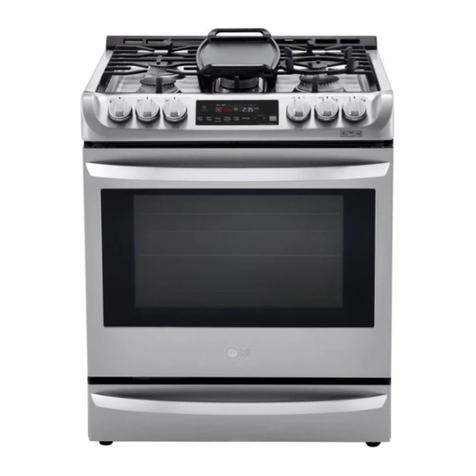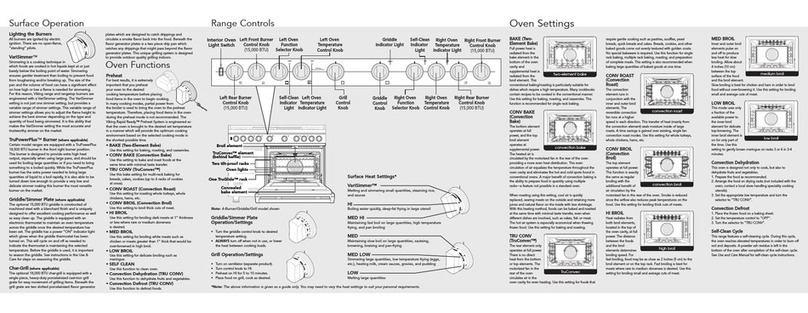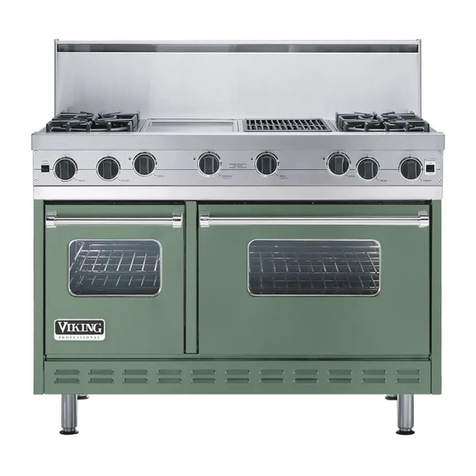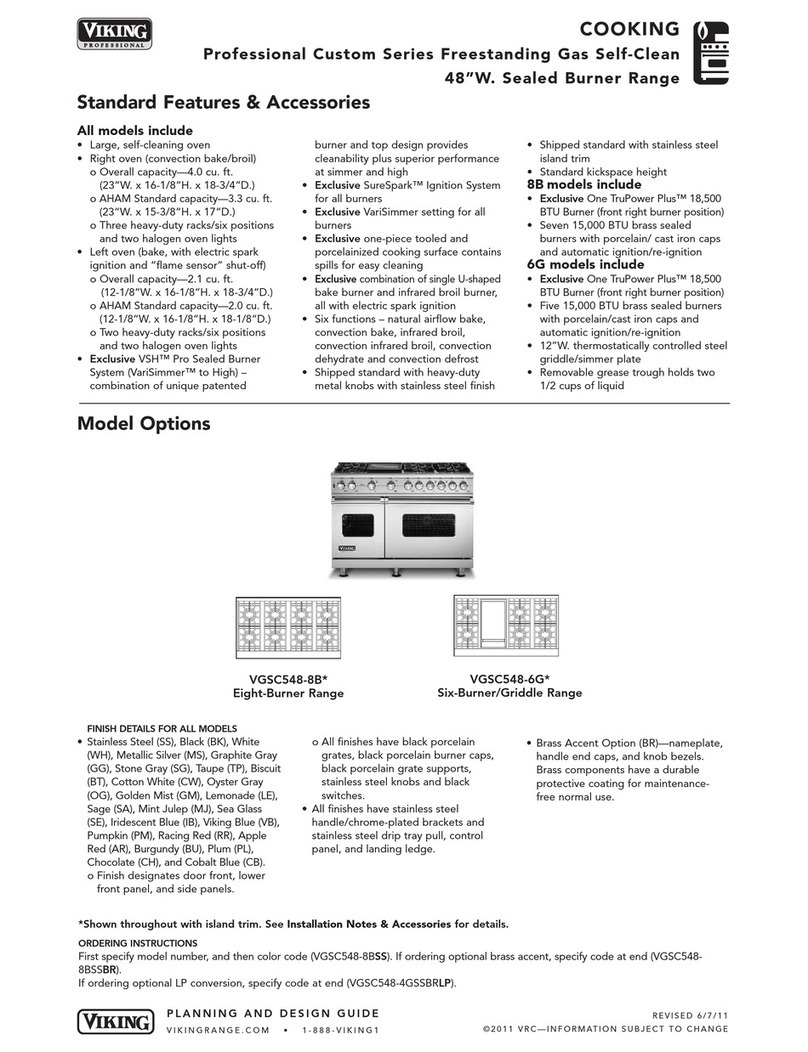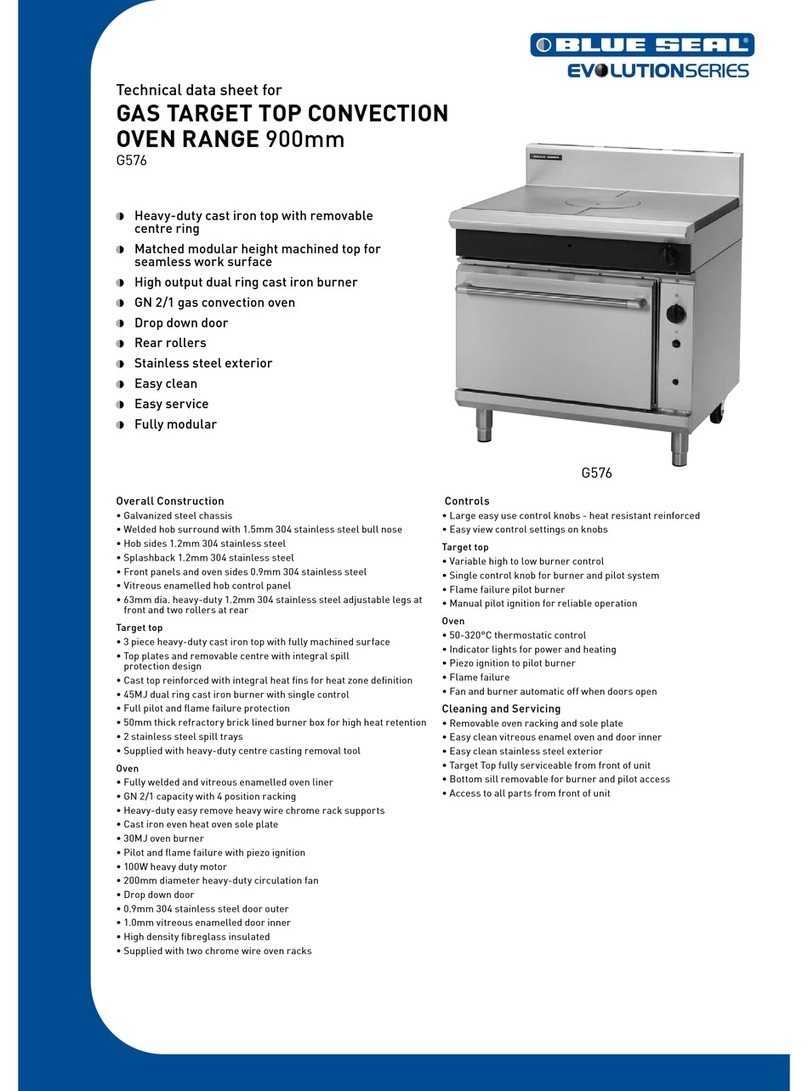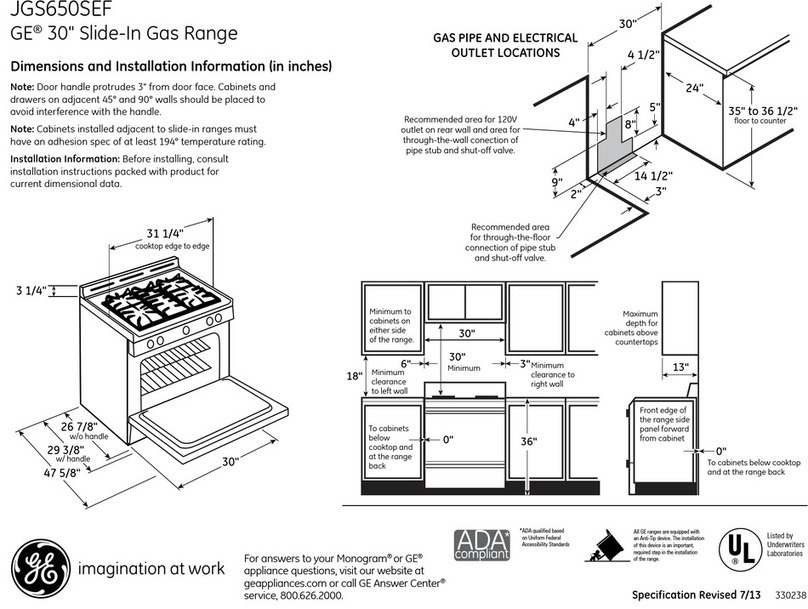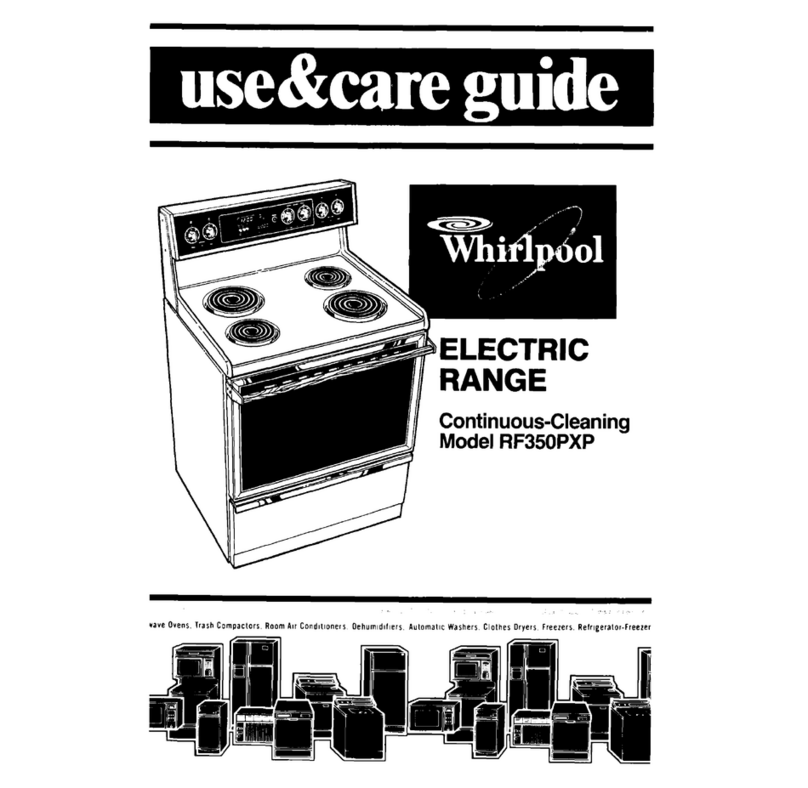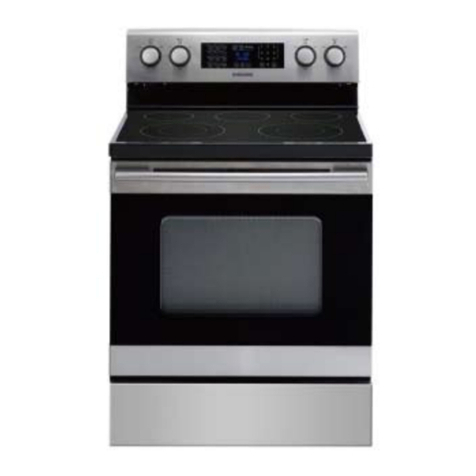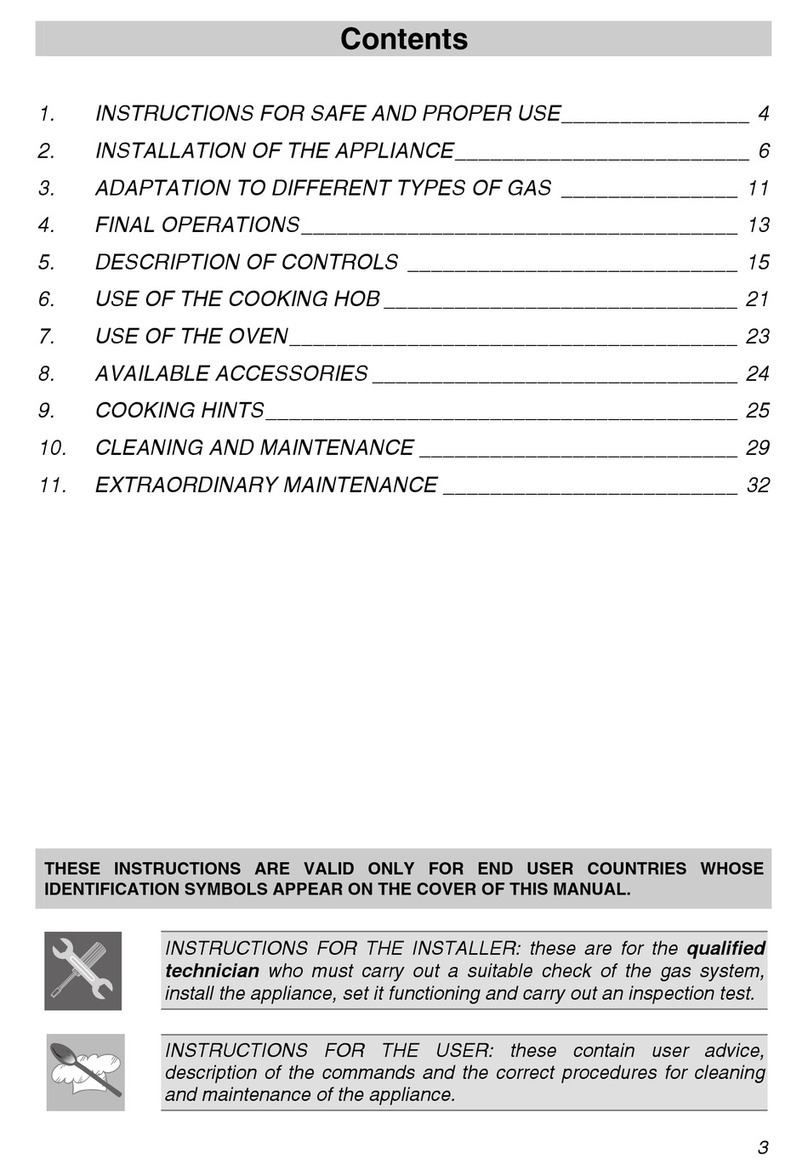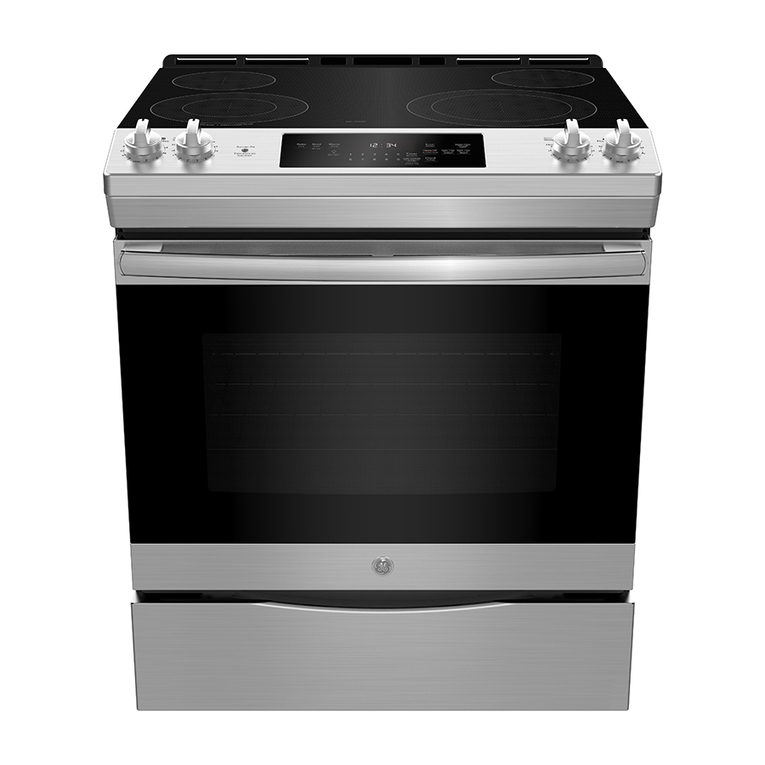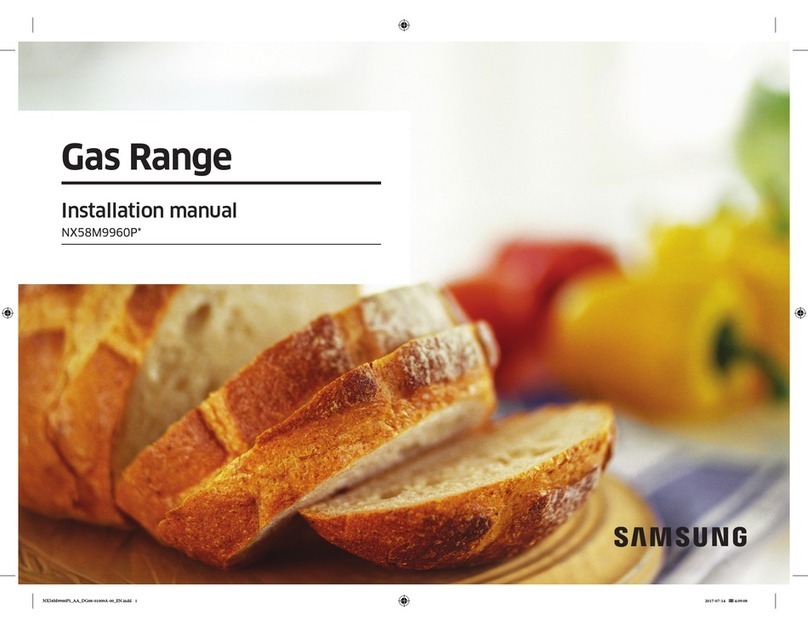9
Ut nsil Saf ty
(cont.)
• Only certain types of glass, glass/ceramic, ceramic or glazed utensils are
suitable for rangetop surface or oven usage without breaking due to the
sudden change in temperature. Follow manufacturer's instructions when
using glass.
• This appliance has been tested for safe performance using conventional
cookware. DO NOT use any devices or accessories that are not specifically
recommended in this guide. DO NOT use eyelid covers for the surface units,
stovetop grills, or add-on oven convection systems. The use of devices or
accessories that are not expressly recommended in this manual can create
serious safety hazards, result in performance problems, and reduce the life of
the components of the appliance.
• The flame of the burner should be adjusted to just cover the bottom of
the pan or pot. Excessive burner setting may cause scorching of adjacent
counter-top surfaces, as well as the outside of the utensil. This is based
on safety considerations.
H ating El m nts
• NEVER touch oven bake and broil burner areas or interior surfaces of oven.
• Bake and broil burners may be hot even though they are dark in color. Areas
near burners and interior surfaces of an oven may become hot enough to
cause burns.
•
During and after use, DO NOT touch or let clothing or other flammable
materials contact heating elements, areas near elements, or interior surfaces
of oven until they have had sufficient time to cool.
Other surfaces of the
oven may become hot enough to cause burns, such as the oven vent
opening, the surface near the vent opening, and the oven door window.
Cl aning Saf ty
• Turn off all controls and wait for appliance parts to cool before touching or
cleaning them. DO NOT touch the burner grates or surrounding areas until
they have had sufficient time to cool.
• Clean appliance with caution. Use care to avoid steam burns if a wet sponge
or cloth is used to wipe spills on a hot surface. Some cleaners can produce
noxious fumes if applied to a hot surface.
•
DO NOT
clean door gasket. It is essential for a good tight seal. Care
should be taken not to rub, damage, or move the gasket.
• No commercial oven cleaner or oven liner protective coating such as
aluminum foil should be used in or around any part of the oven.
Improper oven liners may result in a risk of electric shock or fire. Keep
oven free from grease buildup.
G tting Start d
Warnings
8
Cooking Saf ty
(cont.)
•
ALWAYS
place oven racks in the desired positions while oven is cool.
Slide oven rack out to add or remove food, using dry, sturdy pot-holders.
ALWAYS
avoid reaching into the oven to add or remove food. If a rack
must be moved while hot, use a dry pot-holder.
•ALWAYS turn the oven off at the end of cooking.
• Use care when opening the oven door. Let hot air or steam escape before
moving or replacing food.
•NEVER use aluminum foil to cover oven racks or oven bottom. This could
result in risk of electric shock, fire, or damage to the appliance. Use foil only
as directed in this guide.
•PREPARED FOOD WARNING:
Follow food manufacturer's instructions. If a
plastic frozen food container and/or its cover distorts, warps, or is otherwise
damaged during cooking, immediately discard the food and its container. The
food could be contaminated
.
• If you are “flaming” liquor or other spirits under an exhaust, TURN THE
FAN OFF. The draft could cause the flames to spread out of control.
• Once the unit has been installed as outlined in the Installation
Instructions, it is important that the fresh air supply is not obstructed.
The use of a gas cooking appliance results in the production of heat and
moisture in the room in which it is installed. Ensure that the kitchen is
well-ventilated. Keep natural venting holes open or install a mechanical
ventilation device. Prolonged or intensive use of the appliance may call
for additional (such as opening a window) or more effective ventilation
(such as increasing the level of a mechanical ventilation if present).
Ut nsil Saf ty
• Use pans with flat bottoms and handles that are easily grasped and stay
cool. Avoid using unstable, warped, easily tipped or loose-handled pans.
Also avoid using pans, especially small pans, with heavy handles as they
could be unstable and easily tip. Pans that are heavy to move when filled
with food may also be hazardous.
• Be sure utensil is large enough to properly contain food and avoid boilovers.
Pan size is particularly important in deep fat frying. Be sure pan will
accommodate the volume of food that is to be added as well as the bubble
action of fat.
• To minimize burns, ignition of flammable materials and spillage due to
unintentional contact with the utensil, DO NOT extend handles over
adjacent surface burners. ALWAYS turn pan handles toward the side or back
of the appliance, not out into the room where they are easily hit or reached
by small children.
•NEVER let a pan boil dry as this could damage the utensil and the appliance.
• Follow the manufacturer's directions when using oven cooking bags.
G tting Start d
Warnings

